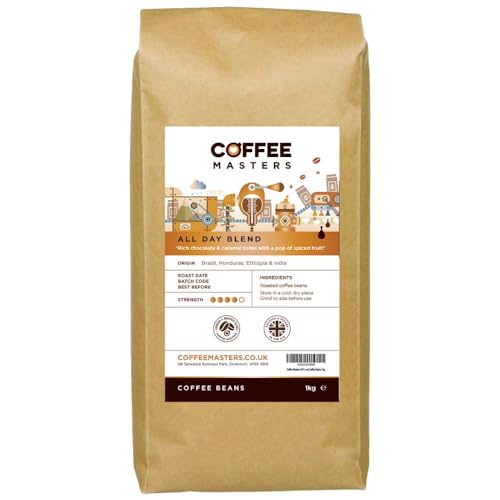Why No One Cares About Coffee Beans Types

Coffee Bean Types: Arabica, Robusta, Liberica, and Excelsa
If you're a coffee lover you're likely to know that different kinds of beans have different flavor profiles. Find out about four of the most common varieties: Arabica. Robusta. Liberica. and Excelsa.
Excelsa beans, a type Liberica which is grown exclusively in Southeast Asia. They have a fruitier and tarter flavor, and are often added to coffee blends to add depth.
Arabica
Arabica is the most well-known coffee in the world, making up 75% of the world's coffee beans produced. Arabica beans are softer and sweeter than Robusta, and they are available in a variety of flavours. The flavor and aroma of coffee are affected by the conditions in which it is grown and the processing methods used.
The word "coffee" is derived from the Arabic word that means berry. Coffee beans are actually seeds that grow in bright red berries. It is believed that the ancient Ethiopian shepherds noticed that their goats became stimulated after eating these berries, and that the cultivation of coffee quickly spread across the world.
Coffee beans can flourish at high altitudes and flourish with cool temperatures and lots of rain. This is the reason Arabica coffee is believed to be the most delicious type of coffee.
Many specialty coffee shops and roasters insist on sourcing their arabica beans ethically, by emphasizing fair wages for farmers and sustainable growing practices. These companies blend arabica beans in order to create unique coffees, which are suitable for a variety of brewing methods. Blending allows for control over the flavour, aroma as well as body and acidity of the coffee. It is often preferred in order to create an even and consistent taste that appeals to a wider market.

Robusta
Robusta beans (Coffea canephora) are the second most commonly used variety of coffee bean grown across the globe. gourmet coffee beans have more caffeine per bean and are more protected against diseases and pests. They also contain higher levels of chlorogenic acids, which are naturally-occurring antioxidants. However, these acids can cause oxidation during the coffee brewing process and may produce undesirable flavors.
The plant itself is more resilient than arabica and is able to grow in less favorable climate conditions and at lower elevations. It can withstand temperatures that are higher and does well in direct sun. It is faster growing and produces more coffee per plant than arabica, making it a more cost-effective plant to cultivate.
Although it may sound contradictory, Robusta and arabica beans are often blended together to create coffee blends. If you see names such as Uganda or Kenya on a coffee bag it's possible there is also some robusta.
Although some roasters exclusively use arabica beans, most do combine both varieties to lower costs and ensure the quality. To preserve the integrity of flavor you should select the highest quality beans from a reliable source. The best method to do this is to purchase your beans directly from the farmer.
Liberica
Liberica beans are more or less football-shaped, which makes them distinct from other types of coffee beans. They have a distinctive aroma that is fruity and floral with smoky undertones. They are often added to other bean varieties to create a fuller, more robust flavor.
Liberica coffee beans are grown in West Africa and Malaysia (Borneo) as and in Southeast Asia. They can be grown at low altitudes and withstand humid, hot climates. They are also more resistant to diseases than Arabica or Robusta.
These qualities make them ideal to grow at home. You can purchase seeds from a variety of sources. However, it is ideal to purchase the beans from local producers to ensure the highest quality. The best conditions for growing Liberica coffee plants include fertile deep volcanic soils with a moderately acidic pH and adequate annual rainfall.
Excelsa is a different variety of coffee bean. It was previously classified as a distinct species, but has since been classified as a Liberica variant. These oval-shaped coffee beans are found on large coffee plants, which can grow to 20-30 feet in height at moderate altitudes. They have a distinct taste that is both tart and fruity which has made them a preferred choice for blends in house. They are also less pronounced in aroma and caffeine than Arabica and Robusta yet still have an unusual taste.
Excelsa
Although they're the fourth most sought-after kind of coffee beans, Excelsa beans aren't as readily available as Arabica or Robusta. In fact they were considered to be a distinct coffee plant species until 2006 when they were changed to an alternative to Coffea liberica var. dewevrei. Today, they're grown mainly in Southeast Asia and account for 7 percent of the world's production of coffee. These coffee beans are shaped in the shape of a teardrop and possess a dark, eerie taste. These beans are often used to give blends additional body and a sweet tart flavor of ripe fruits.
Arabica beans are the most well-known, and are known for having the most delicious taste. They thrive in tropical, warm environments and at high altitudes. They also have a touch of acidity. When roasted and brewed correctly, they can have notes like nuts, chocolate or even fruit.
Robusta is the second most adored coffee worldwide, and is responsible for 40% of all coffee consumed around the world. Robusta beans are smaller and rounder but they have twice as much caffeine as Arabica. They are also more bitter than the other two varieties and have an earthy, woody flavor.
Once you've mastered the four most popular types of coffee beans you can now choose the perfect coffee. If you're looking for a silky and delicate taste, go for an arabica or a blend of robusta and arabica beans.
